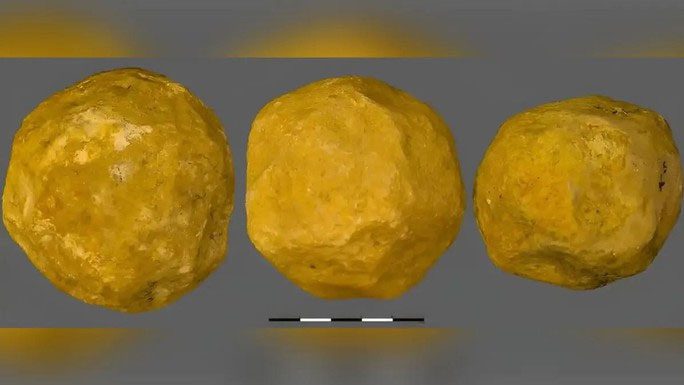During the excavation of a hominid species site in the Middle East, scientists were puzzled by strange limestone objects that were spherical in shape.
The creators of these peculiar objects are believed to be Homo erectus – meaning “upright man” – which, while belonging to the same genus Homo (Human) as our species, Homo sapiens, still bore a striking resemblance to ancestral apes.

Three of the strange artifacts excavated from the 1.4 million-year-old site in Israel – (Photo: Royal Society Open).
They are described as having ape-like faces but walking and standing like humans, possibly being the first species in human history to know how to create tools.
However, the 150 strange objects found at a site named Ubeidiya in northern Israel are truly shocking: “They appear to have been intentionally shaped into perfect spheres. This is almost unreasonable given their age of 1.4 million years.”

Homo erectus – (Photo: Smithsonian Institution).
This period is one that humanity has long believed tools were limited to extremely primitive forms, well before any human species developed brains capable of creating anything resembling art or geometric objects for specific purposes.
According to Dr. Antonie Muller from the Hebrew University of Jerusalem (Israel), the research team believes these may not be works of art but rather that these spherical stones could have some practical function that makes them more useful than naturally occurring round stones.
They might have been a type of hammer used to strike larger stones. But all of this remains speculative.
However, these ancient examples of crafting symmetrical geometric objects certainly indicate that the hominids – or what could be considered very primitive humans – living here had made significant evolutionary advancements in skills, earlier than previously thought by the scientific community.
Archaeologists also cautiously state that this is not yet evidence that these early hominids intentionally crafted them with a clear purpose. It is also possible they experimented with many forms, but did not fully understand their intent.
The new findings were recently published in the journal Royal Society Open, leaving many questions unanswered.





















































